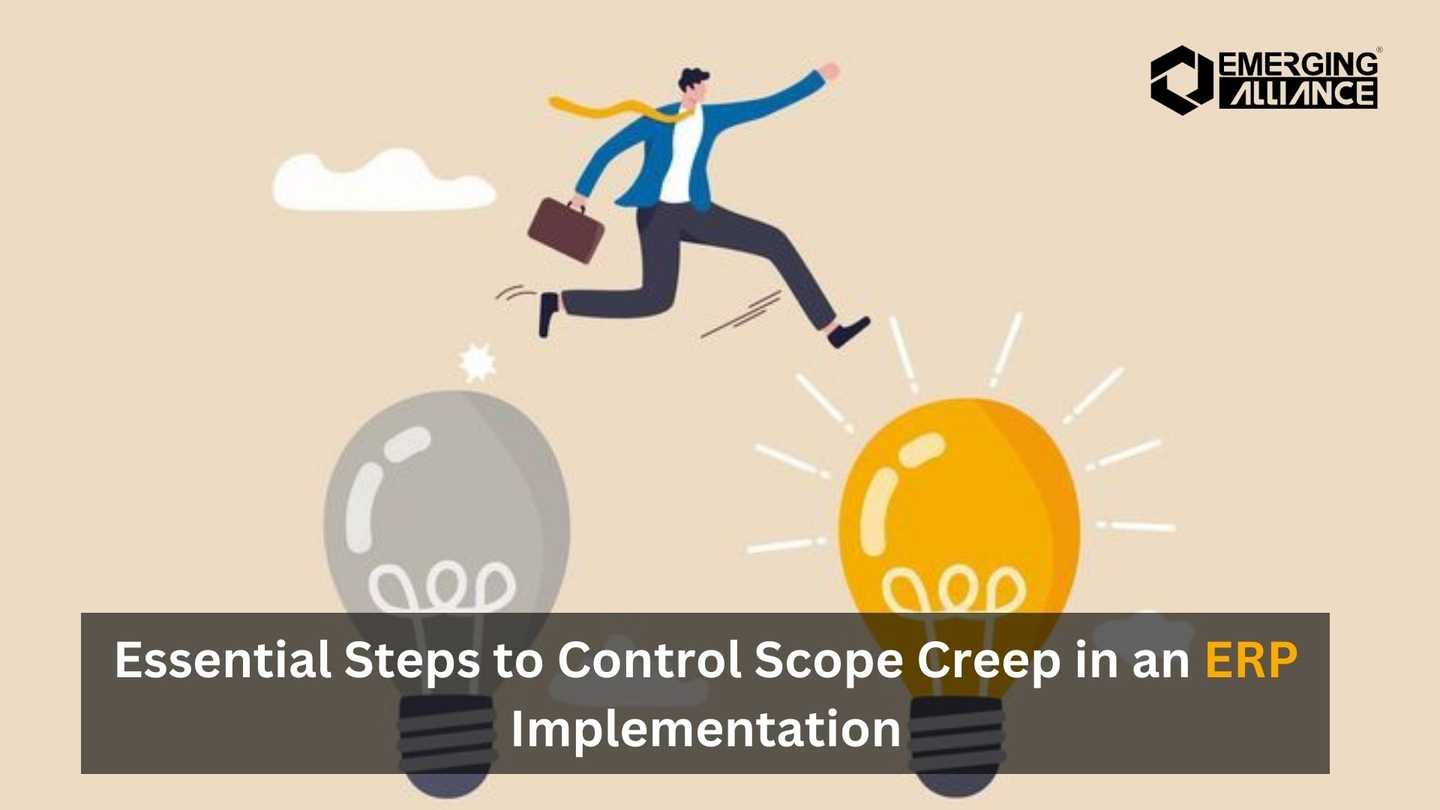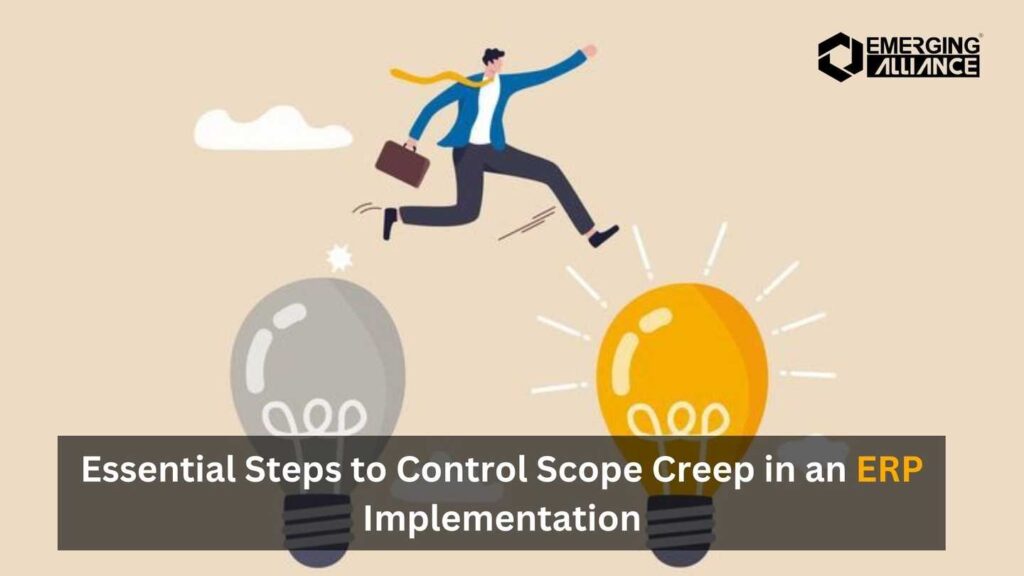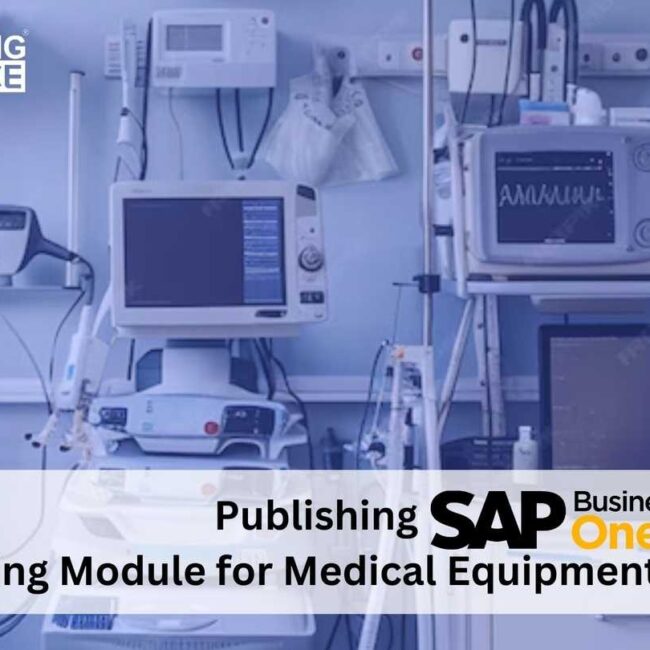
Essential Steps to Control Scope Creep in an ERP Implementation

How to Manage Scope Creep in ERP Implementations Successfully
Implementing an Enterprise Resource Planning (ERP) system can transform an organization, but one of the most significant challenges during this process is managing scope creep. Scope creep refers to the uncontrolled expansion of a project’s scope without corresponding adjustments in time, budget, and resources. In this blog, we’ll outline essential steps to overcome scope creep smoothly in an ERP implementation, ensuring successful project delivery.
Step 1: Clearly Define Your Requirements to Avoid Scope Creep in an ERP Implementation
A successful ERP implementation starts with a clear definition of requirements. Begin by gathering input from all stakeholders to understand their needs and expectations. Create a comprehensive list of functional and technical requirements that align with your business goals. This step is crucial to ensure everyone is on the same page and to avoid any misunderstandings later on.
Tips for Defining Requirements:
- Conduct Workshops: Organize workshops with key stakeholders to gather detailed requirements.
- Prioritize Needs: Use a prioritization matrix to distinguish between critical, important, and nice-to-have requirements.
- Document Everything: Ensure all requirements are well-documented and approved by stakeholders.
Step 2: Prioritize Your Module Requirements to Manage Scope Creep in an ERP
Once you have a clear list of requirements, prioritize them based on usage and importance. Not all modules of an ERP system are equally critical to every organization. By prioritizing your requirements, you can focus on implementing the most essential modules first, ensuring that your core business processes are up and running smoothly before adding additional functionalities.
How to Prioritize Requirements:
- Analyze Usage: Determine which modules are most frequently used by your team.
- Assess Impact: Evaluate the impact of each module on your business operations.
- Allocate Resources: Assign resources and budget according to the priority of each module.
Step 3: Bundle and Prioritize Additional Scope in an ERP Implementation
During the ERP implementation, you may encounter additional requirements or scope changes. Instead of incorporating these changes immediately, bundle them together and evaluate their priority. This approach helps in managing scope creep by preventing continuous changes that can disrupt the project timeline and budget.
Managing Additional Scope:
- Create a Change Request Process: Establish a formal process for submitting and reviewing additional scope requests.
- Evaluate Impact: Assess the impact of new requirements on the existing project plan.
- Bundle Changes: Group similar changes together and prioritize them based on business needs.
Step 4: Communicate Clearly with Your ERP Provider
Effective communication with your ERP provider is crucial to managing scope creep. Once you have a clear understanding of your requirements and priorities, communicate them to your ERP provider. Regular updates and feedback sessions can help keep the project on track and ensure that any changes are managed efficiently.
Communication Tips:
- Regular Meetings: Schedule regular meetings with your ERP provider to discuss project progress and any potential changes.
- Detailed Documentation: Provide detailed documentation of requirements and any changes to avoid misunderstandings.
- Feedback Loops: Establish feedback loops to ensure continuous improvement and alignment with business goals.
Step 5: Implement Change Management Strategies
Change management is an essential component of ERP implementation. By implementing effective change management strategies, you can ensure that your team is prepared for the new system and can adapt to any changes smoothly. This helps in minimizing resistance and maximizing the benefits of the ERP system.
Change Management Strategies:
- Training Programs: Conduct comprehensive training programs for all users.
- User Involvement: Involve users in the implementation process to gain their buy-in and support.
- Communication Plans: Develop clear communication plans to keep everyone informed about the project’s progress and any changes.
Overcoming scope creep in an ERP implementation requires meticulous planning, clear communication, and effective change management. By defining your requirements clearly, prioritizing your modules, bundling additional scope, communicating effectively with your ERP provider, and implementing robust change management strategies, you can ensure a smooth and successful ERP implementation. Remember, managing scope creep is an ongoing process that requires continuous attention and adaptation to achieve your business objectives.
To learn more about our products & services, visit us at: https://www.emerging-alliance.com/
Join the ranks of the inquisitive – Delve into captivating content on our website and uncover more than you ever imagined!
Want to speak to an expert? Fill in the form below, and we will be in touch with you shortly!




